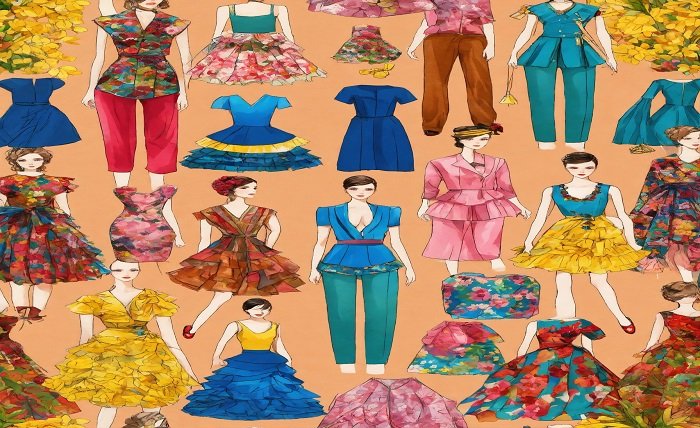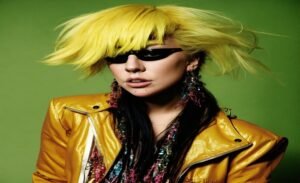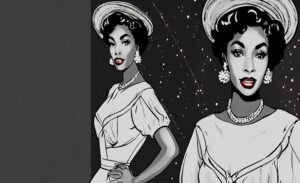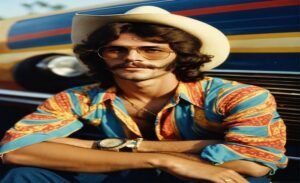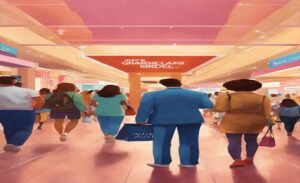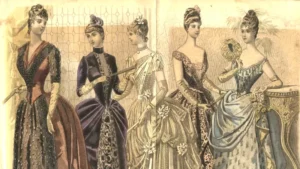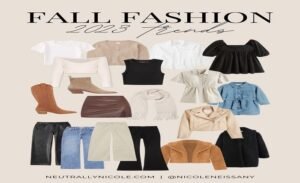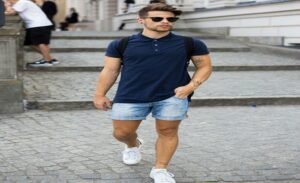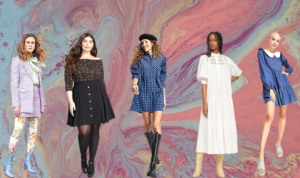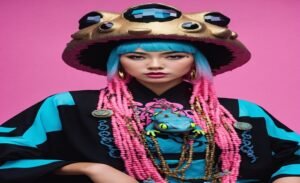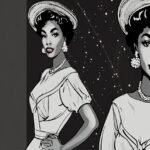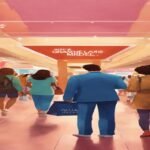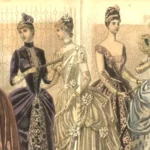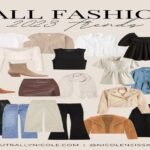The well-known song “Endless Fashion” features American rapper Nicki Minaj and is performed by American singer-songwriter Lil Uzi Vert. The second single from the former’s third studio album, Pink Tape (2023), was made available on August 18, 2023. It features an interpolation of “Blue (Da Ba Dee)” by Eiffel 65 and was produced by Bugz Ronin. Fans of Nicki Minaj and Lil Uzi Vert have taken to the song, which has garnered praise from critics for its smart lyrics and catchy beat.
Lil Uzi Vert and Nicki Minaj’s passion for fashion is reflected in the song “Endless Fashion.” The song discusses their infatuation with high-end labels and their constant quest for perfection. The lyric, “Endless fashion, endless cash, we don’t need a reason to stunt,” demonstrates their opulent way of life and their capacity to buy whatever they choose. In addition, the song makes references to well-known fashion labels including Balenciaga, Louis Vuitton, and Gucci.
Endless Fashion has been praised for its production value and its ability to capture the essence of Lil Uzi Vert’s and Nicki Minaj’s unique styles. The song’s catchy beat and clever lyrics have made it a favorite among fans of both artists, and it has received widespread critical acclaim. With its upbeat tempo and infectious chorus, Endless Fashion is sure to remain a hit among music fans for years to come.
Evolution of Endless Fashion
Endless fashion is a term used to describe a style that is constantly evolving and changing. It is a fashion trend that is not limited to a particular era or culture. Instead, it is a reflection of the changing times and the ever-evolving tastes of people. Endless fashion has a rich history that has been shaped by various factors such as culture, technology, and social norms.
Historical Perspectives
The evolution of endless fashion can be traced back to the early 20th century when the fashion industry was just beginning to take shape. During this period, fashion was heavily influenced by the Art Deco movement, which was characterized by geometric shapes, bold colors, and intricate patterns. This movement inspired designers to create clothing that was both functional and aesthetically pleasing.
In the 1960s, the fashion industry saw the emergence of the hippie culture, which was characterized by a rejection of mainstream values and a desire for individuality. This movement gave rise to the bohemian style, which was characterized by flowing fabrics, bold prints, and a carefree attitude. The bohemian style was embraced by many young people who were looking for a way to express their individuality.
Modern Innovations
In recent years, endless fashion has been influenced by modern innovations such as technology and social media. The rise of social media platforms such as Instagram and Pinterest has made it easier for people to discover new fashion trends and styles. This has led to the emergence of new fashion subcultures such as streetwear, which is characterized by casual clothing and a focus on comfort.
In addition, technology has played a significant role in the evolution of endless fashion. The development of new fabrics and materials has allowed designers to create clothing that is both comfortable and functional. For example, the use of performance fabrics in athletic wear has revolutionized the sportswear industry, making it possible for athletes to perform at their best.
Overall, endless fashion is a reflection of the changing times and the ever-evolving tastes of people. It is a trend that is not limited to a particular era or culture and is constantly evolving and changing.
Sustainability in Endless Fashion
As the fashion industry grows, so does the concern for its impact on the environment. The concept of endless fashion, which promotes the idea of producing new clothing and accessories in a continuous cycle, has drawn criticism for its contribution to waste and pollution. However, there are ways to make endless fashion more sustainable.
Eco-Friendly Materials
One way to make Endless Fashion more sustainable is by using eco-friendly materials. These materials are produced with minimal impact on the environment, and they can be recycled or biodegraded after their use. Some examples of eco-friendly materials include organic cotton, hemp, bamboo, and recycled polyester. These materials not only reduce the environmental impact of fashion, but they also offer benefits such as increased durability and breathability.
Circular Fashion Models
Another way to make endless fashion more sustainable is by adopting circular fashion models. These models promote the reuse and recycling of clothing and accessories, reducing the amount of waste produced by the fashion industry. Some examples of circular fashion models include rental services, resale platforms, and upcycling initiatives. These models not only reduce waste but also offer benefits such as affordability and variety.
In conclusion, endless fashion can be made more sustainable through the use of eco-friendly materials and circular fashion models. By adopting these practices, the fashion industry can reduce its impact on the environment and promote a more sustainable future.
Technological Integration
As fashion continues to evolve, technology has become an integral part of the industry. From smart textiles to wearable technology, designers are incorporating innovative technologies into their designs to create endless fashion possibilities.
Smart Textiles
Smart textiles are fabrics that have been designed to incorporate technology, allowing them to perform a variety of functions. These textiles can be used to create clothing that can change color, adjust to temperature changes, and even charge electronic devices. Some fabrics are even being developed to have self-cleaning properties, making them easier to maintain.
One example of smart textiles is the conductive thread, a thread that is made with conductive materials such as silver or copper. This thread can be used to create clothing that can interact with electronic devices, such as a jacket that can control a smartphone or a shirt that can monitor heart rate.
Wearable Technology
Wearable technology is another area where fashion and technology are converging. These innovative garments and accessories blend style with functionality, incorporating sensors, microchips, and other advanced technologies.
One popular example of wearable technology is fitness trackers, which can monitor physical activity and provide data on steps taken, calories burned, and heart rate. Smartwatches are another example of wearable technology, offering features such as GPS, music playback, and mobile payments.
As technology continues to advance, the possibilities for wearable technology are endless. From smart jewelry to even smart shoes, designers are finding new ways to incorporate technology into their designs to create innovative and functional fashion.
In conclusion, technological integration has opened up a whole new world of possibilities for fashion. With smart textiles and wearable technology, designers are creating clothing that not only looks great but also has added functionality and convenience.
Global Market Dynamics
The global fashion industry has been facing significant economic and geopolitical challenges in recent years. The industry is currently experiencing a period of disruption, with various factors affecting the global market dynamics. This section will examine some of the most significant trends and opportunities in the fashion industry.
Consumer Behavior Trends
Consumer behavior is a critical factor in the fashion industry, and it has been changing rapidly in recent years. Consumers are becoming increasingly conscious of sustainability and ethical practices, and they are demanding more transparency from brands. This trend is expected to continue, and fashion companies will need to adapt to meet the changing needs of consumers.
One way that fashion companies can respond to this trend is by adopting sustainable practices throughout their supply chain. This includes using eco-friendly materials, reducing waste, and implementing fair labor practices. By doing so, companies can appeal to consumers who are looking for more sustainable and ethical fashion options.
Emerging Markets and Opportunities
The fashion industry is also seeing significant growth in emerging markets, particularly in Asia and Africa. These regions have large and growing middle classes, which are driving demand for fashion products. Additionally, many emerging markets have lower labor and production costs, making them attractive locations for fashion companies to expand their operations.
However, entering these markets can be challenging, as companies need to adapt to local cultures and preferences. Companies that can successfully navigate these challenges can tap into significant growth opportunities in these markets.
In conclusion, the global fashion industry is undergoing significant changes, driven by evolving consumer behavior and emerging markets. Companies that can adapt to these changes and adopt sustainable and ethical practices are likely to succeed in this dynamic market.
Frequently Asked Questions
What is the significance behind the term ‘endless fashion’?
The term ‘endless fashion‘ is used to describe the never-ending cycle of fashion trends. It represents the idea that fashion is constantly evolving and changing, with new styles and trends emerging all the time. The term is also used to describe the concept of sustainable fashion, which aims to reduce waste and promote environmentally friendly practices in the fashion industry.
Can you explain the meaning of the lyrics in ‘Endless Fashion’?
‘Endless Fashion‘ is a song by Lil Uzi Vert that talks about his love for fashion and his desire to stay ahead of the trend. The lyrics highlight his preference for high-end fashion brands like Junya Watanabe and Chrome Hearts, and his willingness to spend money on designer clothing. The song also touches on the theme of materialism and the idea that fashion can be a form of self-expression.
Which original song does ‘Endless Fashion’ sample?
‘Endless Fashion’ samples the song “Blue” by Eiffel 65. The sample is used in the chorus of the song, where Lil Uzi Vert sings “I’m splashin’ in fashion, I can’t take no loss.”
When was ‘Endless Fashion’ officially released?
‘Endless Fashion’ was officially released on August 18, 2023, as the second single from Lil Uzi Vert’s third studio album, ‘Pink Tape.’
Is there a clean version available for ‘Endless Fashion’?
Yes, there is a clean version available for ‘Endless Fashion.’ The clean version removes any explicit language from the song and is suitable for radio play.
How many times has ‘Endless Fashion’ been streamed on Spotify?
As of April 2024, ‘Endless Fashion’ has been streamed over 500 million times on Spotify. The song has also been a commercial success, reaching the top 10 on the Billboard Hot 100 chart.

